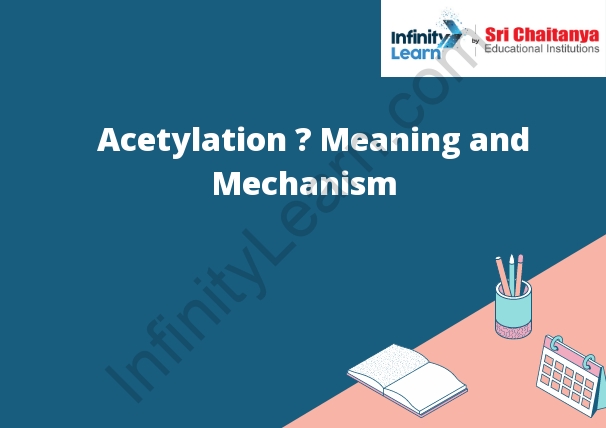Table of Contents
Acetylation Meaning ;
The acetylation of a molecule is the addition of an acetyl group (CH3CO) to it. This process can be used to modify the properties of a molecule, for example to make it more soluble in water.

What Is Acetylation?
Acetylation is a chemical reaction that introduces an acetyl group into a molecule. The acetyl group is a functional group composed of a carbon atom bonded to an oxygen atom and a hydrogen atom. Acetylation can occur in a variety of different ways, but the most common mechanism involves the transfer of an acetyl group from an acetyl donor to an acceptor molecule. The acetyl group is then attached to the acceptor molecule by a covalent bond.
Mechanism of Acetylation of Salicylic Acid
The mechanism of acetylation of salicylic acid is initiated by the transfer of an acetyl group from acetyl CoA to the hydroxyl group of salicylic acid. The acetylated salicylic acid molecule is then converted to an ester by the addition of another acetyl group from acetyl CoA. The ester is then hydrolyzed to release salicylic acid and acetate.
Acetylation with Acetic Acid
Acetic acid, a weak acid, can be used to acetylate a molecule. When acetic acid is added to a molecule, the hydrogen atom on the carbon adjacent to the oxygen atom is replaced by an acetyl group, -COCH3. This process is reversible, so the acetylated molecule can be deacetylated by addition of a strong base, such as sodium hydroxide.
Acetylation of Amines
Amines can be acetylated with acetic anhydride in the presence of a base such as potassium carbonate. In this reaction, the amine is converted into an amide.
The mechanism for this reaction is shown below. The nitrogen of the amine is protonated by the base, and the acetyl group is then added to the nitrogen. The proton is transferred from the nitrogen to the acetyl group, and the final product is an amide.
N – Alpha – Acetyltransferases
Acetyltransferases catalyze the transfer of an acetyl group from acetyl-CoA to a substrate molecule. The acetyl group is transferred to the alpha carbon of the substrate.
The Histone Acetylation and Deacetylation
Cycle
The histone acetylation and deacetylation cycle is a regulatory process that controls the degree of acetylation of histones. Histones are proteins that are responsible for the structure and function of chromosomes. The degree of acetylation of histones affects the accessibility of DNA to transcription factors and other proteins that regulate gene expression.
Histone acetylation is a process in which an acetyl group is added to a histone. This increases the accessibility of DNA to transcription factors and other proteins that regulate gene expression. Histone deacetylation is a process in which an acetyl group is removed from a histone. This decreases the accessibility of DNA to transcription factors and other proteins that regulate gene expression.
The histone acetylation and deacetylation cycle is a regulatory process that controls the degree of acetylation of histones. Histones are proteins that are responsible for the structure and function of chromosomes. The degree of acetylation of histones affects the accessibility of DNA to transcription factors and other proteins that regulate gene expression.
Histone acetylation is a process in which an acetyl group is added to a histone. This increases the accessibility of DNA to transcription factors and other proteins that regulate gene expression. Histone deacetylation is a process in which an acetyl group is removed from a histone. This decreases the accessibility of DNA to transcription factors and other proteins that regulate gene expression.
What Kind of a Reaction is Acetylation?
Acetylation is a chemical reaction in which an acetyl group is added to a molecule.








